This article includes a list of general references, but it lacks sufficient corresponding inline citations .(March 2018) |
Roberto Cabot (Rio de Janeiro, 1963 [1] ) is a Brazilian visual artist.
This article includes a list of general references, but it lacks sufficient corresponding inline citations .(March 2018) |
Roberto Cabot (Rio de Janeiro, 1963 [1] ) is a Brazilian visual artist.
Roberto Cabot is a painter, sculptor and musician. He started including the Internet in his art in 1986 and it soon became an integral part of his work. In 2008, he exhibited a large installation at the Martin Gropius Bau in Berlin which simultaneously displayed several live images from webcams in different tropical areas of the world. This was the last installation in his series on the "Aleph," a point in space that contains all other points, as described in Jorge Luis Borges' homonymous short story.
Roberto Cabot has displayed his work in many public and private collections, including the MASP and MAM - Gilberto Châteaubriand, in Brazil, Deutsche Bank and Hoffmann, in Germany, and CAAM - Centro Atlantico de Arte Moderna, in Spain.
[2] [3] [4] [5] [6] [7] [8] [9] [10] [11] [12] [13] [14] [15]

Alfons Hug is a curator, critic and exhibition organizer.
Brígida Baltar was a Brazilian visual artist. Her work spanned across a wide range of mediums, including video, performance, installation, drawing, and sculpture. She was interested in capturing the ephemeral in her artwork.
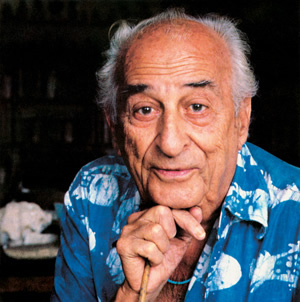
Héctor Julio Páride Bernabó was an Argentine-Brazilian artist, researcher, writer, historian and journalist. His nickname and artistic name, Carybé, a type of piranha, comes from his time in the scouts. He died of heart failure after the meeting of a candomblé community's lay board of directors, the Cruz Santa Opô Afonjá Society, of which he was a member.

Gretta Sarfaty, born Alegre Sarfaty, is also known as Gretta Grzywacz and Greta Sarfaty Marchant, also simply as Gretta. is a painter, photographer and multimedia artist who earned international acclaim in the 1970s, from her artistic works related to Body art and Feminism. Born in Greece, in 1947, she moved with her family to São Paulo in 1954, being naturalized as Brazilian.
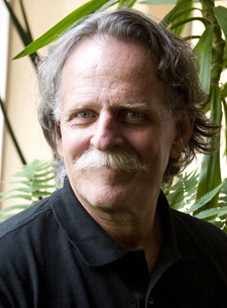
Claudio Edinger is a Brazilian photographer born in Rio de Janeiro in 1952. He lived in New York from 1976 to 1996.
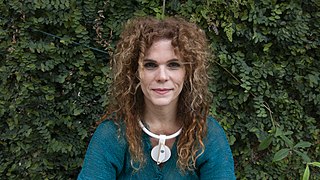
Laura Lima is a contemporary Brazilian artist who lives and works in Rio de Janeiro. Since the 1990s, Lima has discussed in her works the matter of alive beings, among other topics. Her works can be found in the collections of institutions such as Bonniers Konsthall, Stockholm, Sweden; Inhotim Institute, Brumadinho, Brazil; MAM - Museum of Modern Art, São Paulo, Brazil; Migros Museum für Gegenwartskunst, Zurich, Switzerland; Pinacoteca of the State of São Paulo, Brazil; Itaú Cultural, São Paulo, Brazil; Pampulha Museum of Art, Belo Horizonte, Brazil; National Museum of Fine Arts, Rio de Janeiro, Brazil; Hammer Museum, Los Angeles, USA; MASP - Museum of Art of São Paulo, Brazil, among others.

Sheila Leirner is a French Brazilian curator, journalist, and art critic, as well as a writer. She was chief curator of the XVIII and XIX São Paulo Art Biennials.
Maria Lynch is a Brazilian artist and heiress, the daughter of Sergio Lins Andrade and Adriana Barreto.
Dudi Maia Rosa is a Brazilian artist.
Waldemar Cordeiro was an Italian-born Brazilian art critic and artist. He worked as a computer artist in the early days of computer art and was a pioneer of the concrete art movement in Latin America.
Judith Lauand was a Brazilian painter and printmaker. She is considered a pioneer of the Brazilian modernist movement that started in the 1950s, and was the only female member of the concrete art movement based in São Paulo, the Grupo Ruptura.
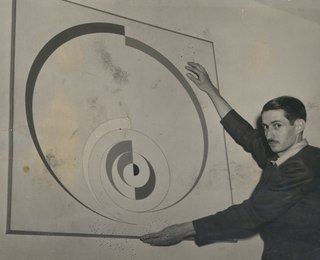
Ivan Ferreira Serpa was a Brazilian painter, draftsman, printmaker, designer, and educator active in the concrete art movement. Much of his work was in geometric abstractionism. He founded Grupo Frente, which included fellow artists Lygia Clark, Helio Oiticica, and Franz Weissmann, among others, and was known for mentoring many artists in Brazil.
Hermelindo Fiaminghi was a Brazilian painter, designer, graphic designer, lithographer, professor, and art critic, known for his geometric works and exploration of color.

Henrique Alvim Corrêa was a Brazilian illustrator of military and science fiction books. He was born in Rio de Janeiro, and died in Brussels. He is best known for his illustrations of a French translation of H. G. Wells's novel The War of the Worlds.

Wanda Pimentel was a Brazilian painter, based in Rio de Janeiro, Brazil. Her work is distinguished by "a precise, hard-edge quality encompassing geometric lines and smooth surfaces in pieces that often defy categorization as abstract or figurative. “My studio is in my bedroom,” Pimentel said in an interview. “Everything has to be very neat. .. I work alone. I think my issues are the issues of our time: the lack of perspective for people, their alienation. The saddest thing is for people to be dominated by things.”
Sheila Maureen Bisilliat is an English-born Brazilian photographer.
Teresinha Soares is a Brazilian pop art artist who currently lives and works in Belo Horizonte, Brazil. She produced art during the 1960s and 1970s and was best known for her erotic artwork that explored femininity and pushed back against Brazil's oppressive government.

Yolanda Léderer Mohalyi was a painter and designer who worked with woodcuts, mosaics, stained glass and murals as well as more usual materials. Her early work was figurative, but she increasingly moved towards abstract expressionism. With artists such as Waldemar da Costa and Cicero Dias, she opened the way for abstraction in Latin American art.
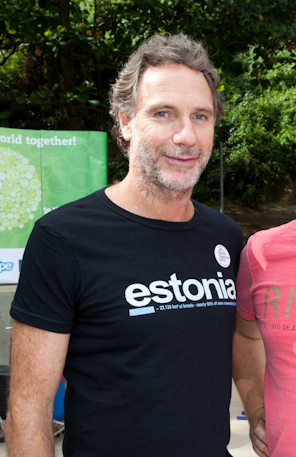
Oskar Metsavaht is a Brazilian artist, academic degree in medicine, fashion designer environmental activist and Amazon guardian. Oskar's work expresses the theme of preserving the forest, water and the empowerment and protection of the peoples of the forest, as an artist, designer and activist. He is founder and creative director of Osklen, a Brazilian fashion brand, recognized as one of the forerunners of the New Luxury concept that strives for the fusion between ethics and aesthetics and advocates conscious fashion through the adoption of sustainable practices. Creative Director of OM.art studio, where he hosts his art studio, an exhibition space and the studio for the development and production of art projects. Metsavaht serves as UNESCO Goodwill Ambassador. Creator of Janeiro Hotel, located in Leblon, Rio de Janeiro. He is also on the advisory board of the Inhotim Institute and board member of Museum of Modern Art (MAM) of Rio de Janeiro. In 2014, Oskar Metsavaht was awarded as Knight of Ordem do Mérito Cultural medal from the Ministry of Culture (Brazil) an honorary order granted by the Federal Government to personalities and institutions that make relevant contributions to Brazil's culture.

Marcela Cantuária is a Brazilian visual artist working primarily with paintings. Cantuária's work revolves around contemporary historical paintings produced in small and large formats. Recurring themes in her work are social movements, political history, feminisms, and environmental causes in Latin America.